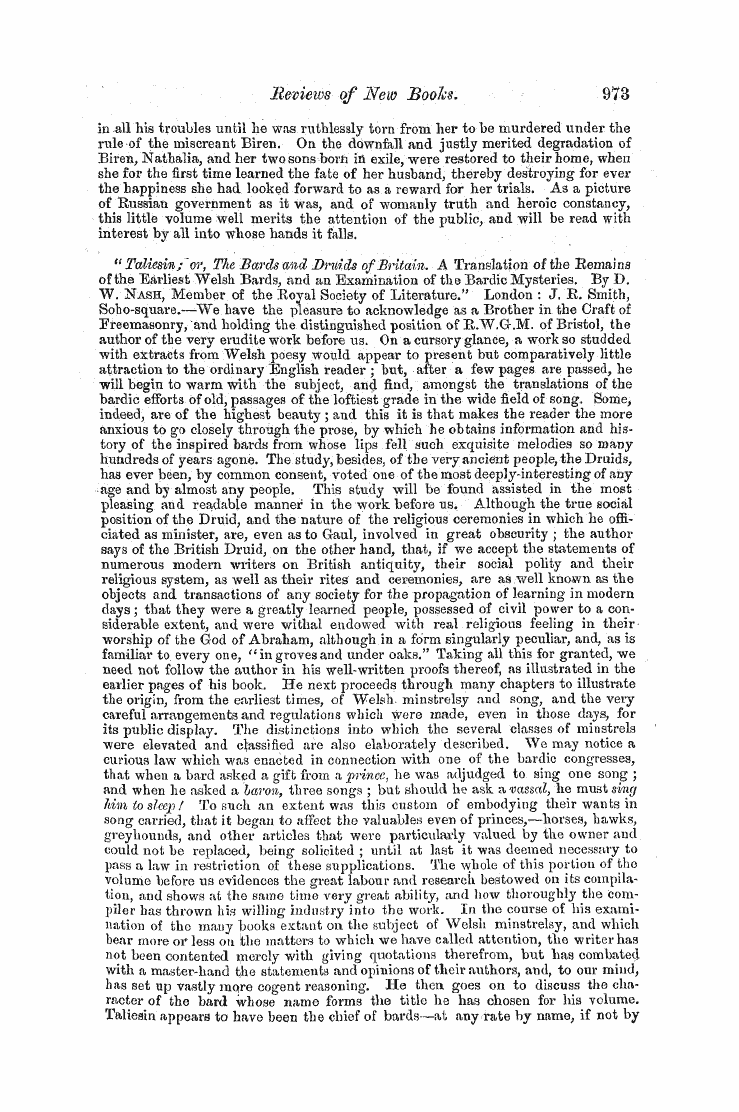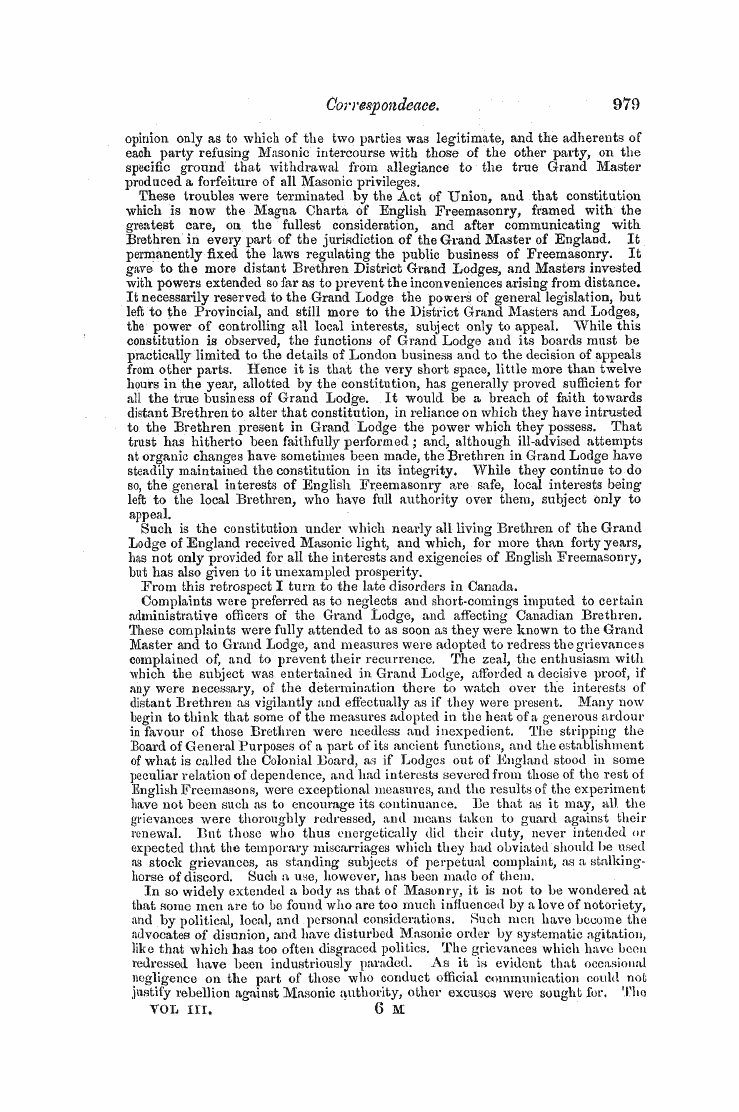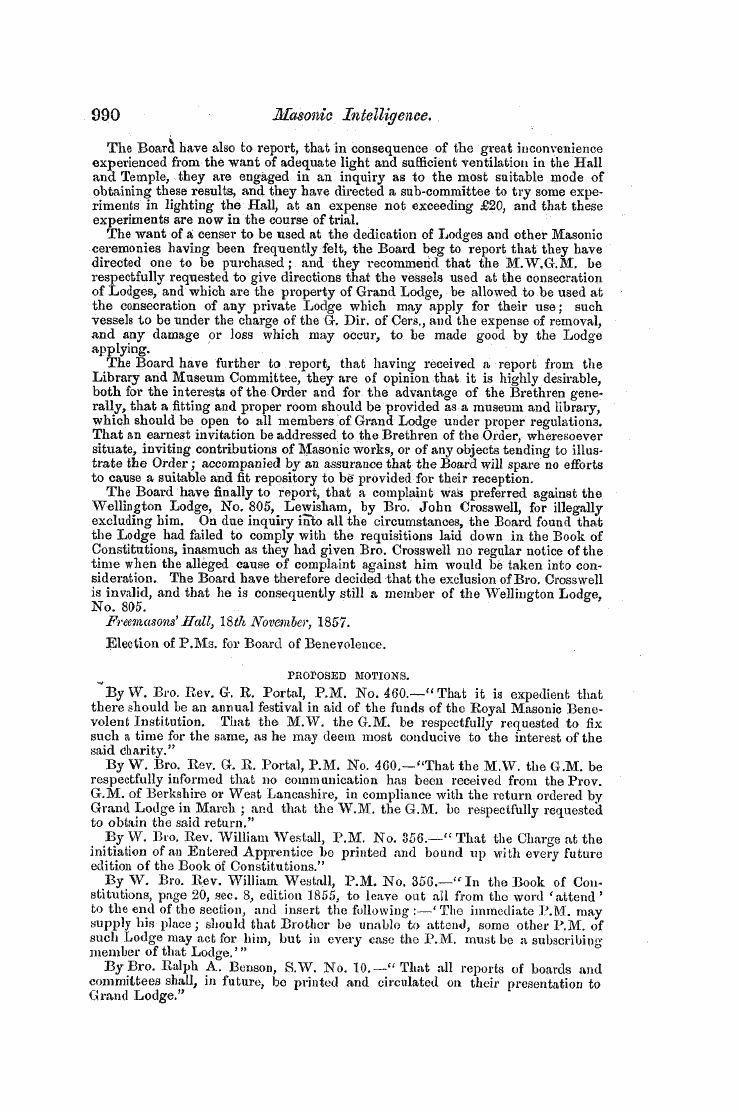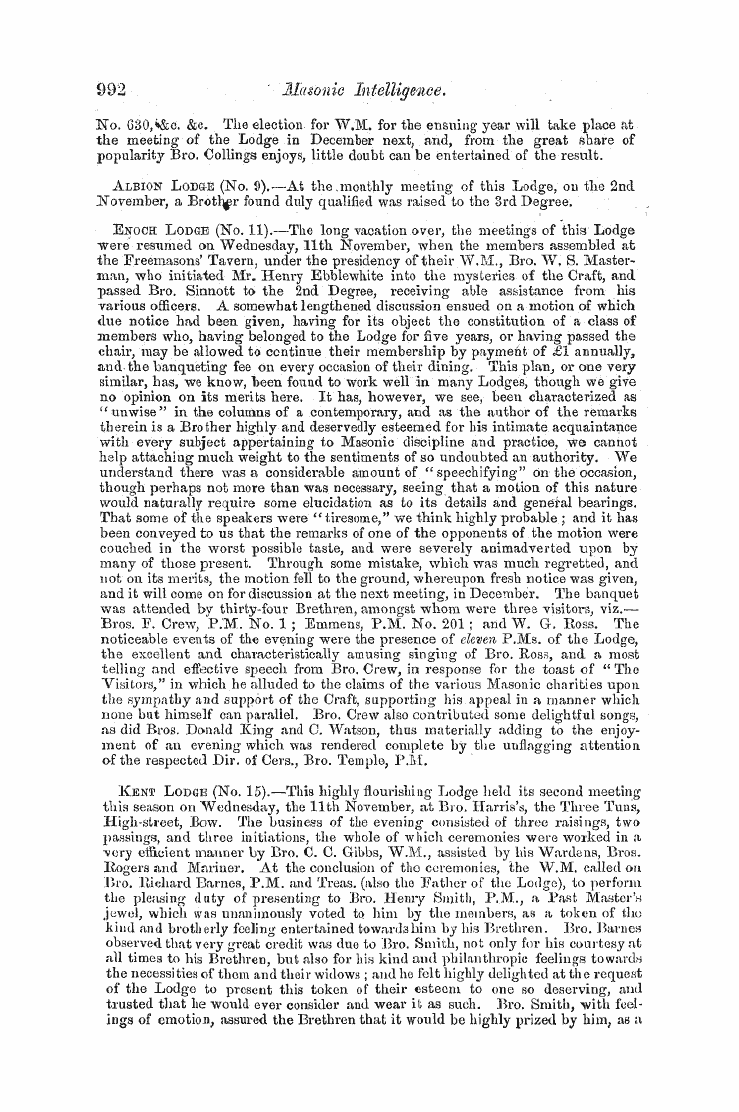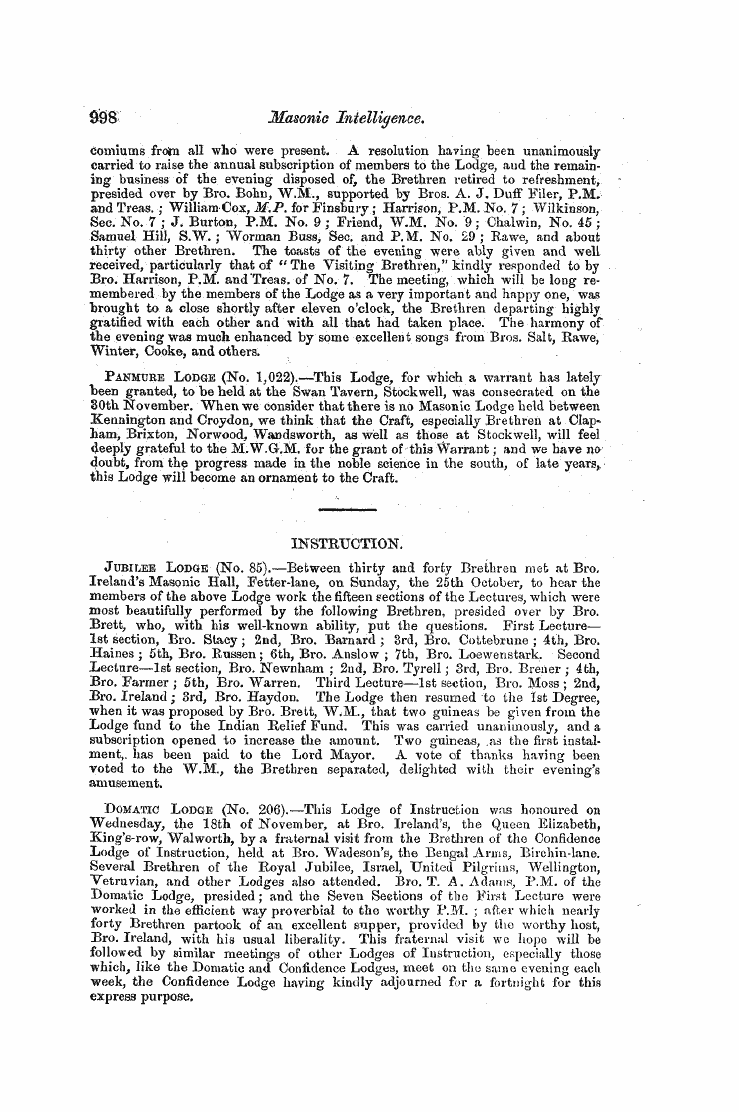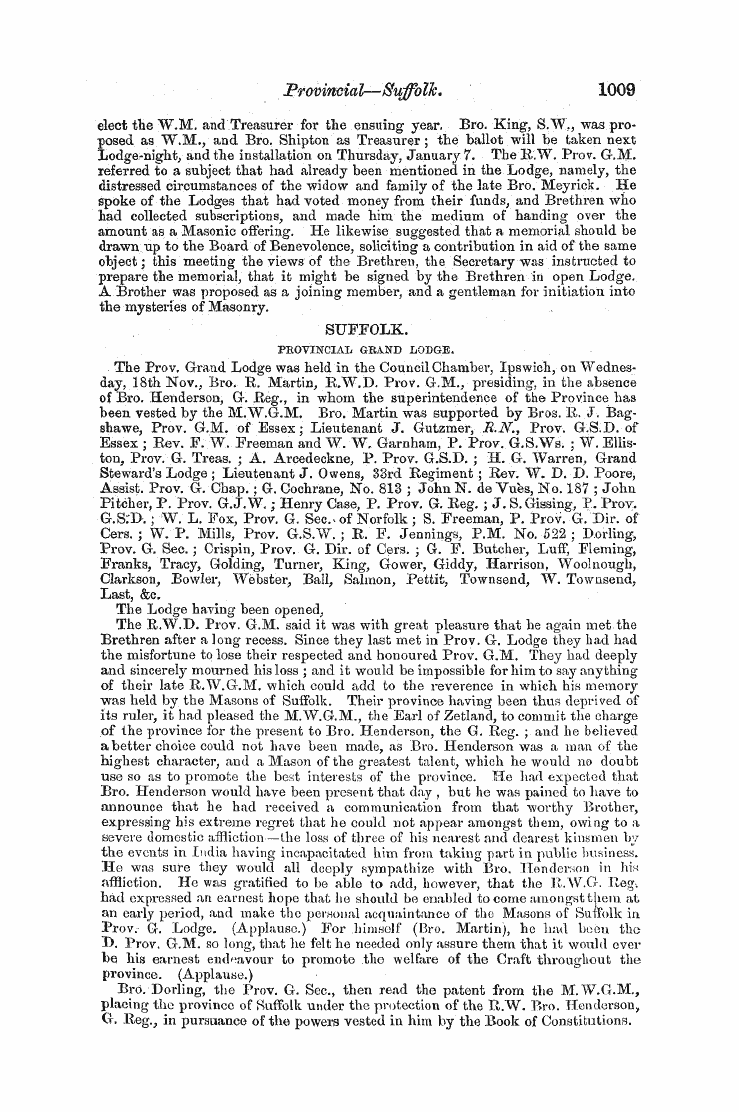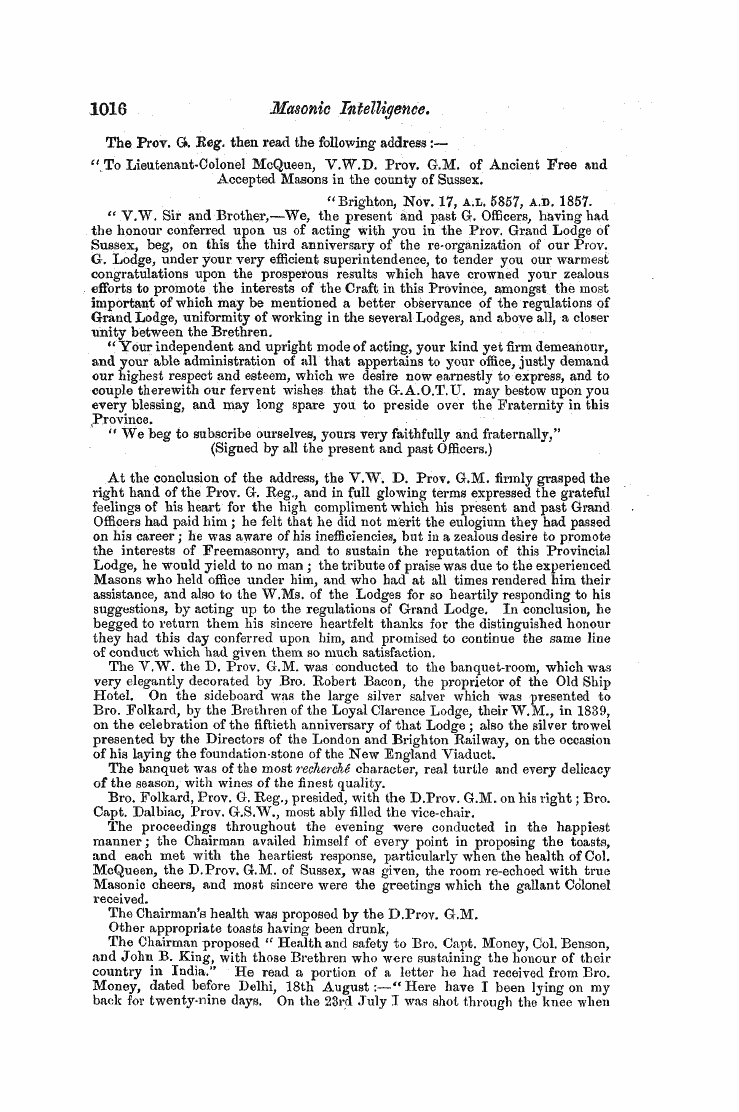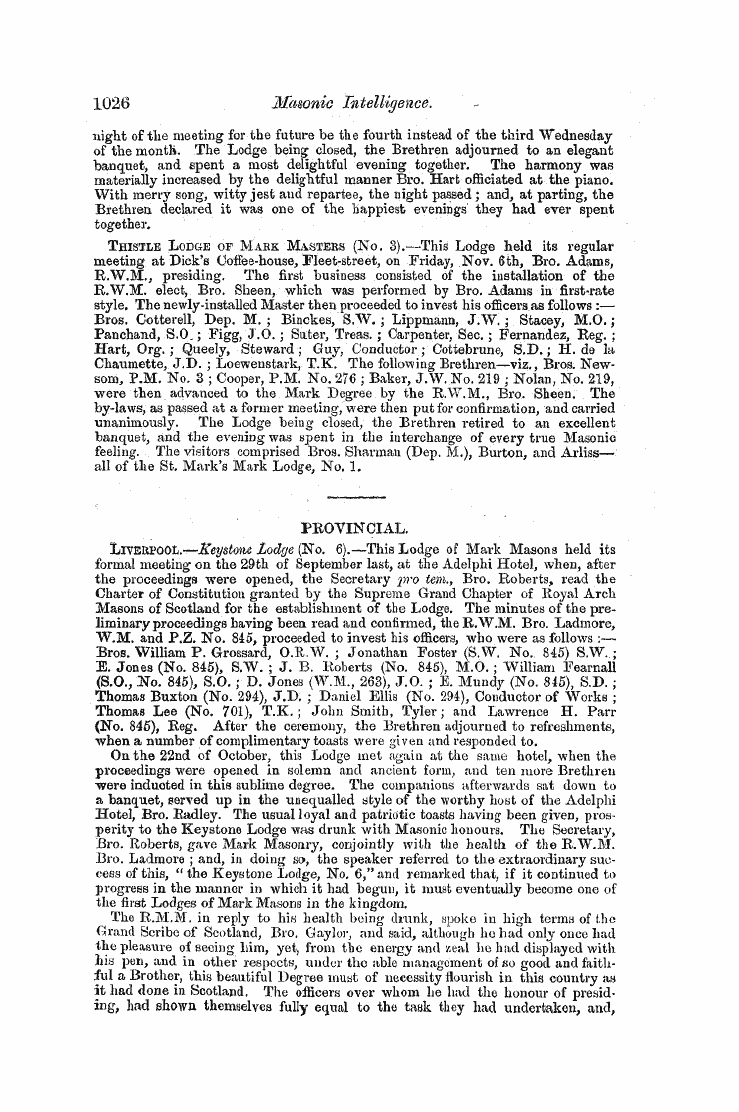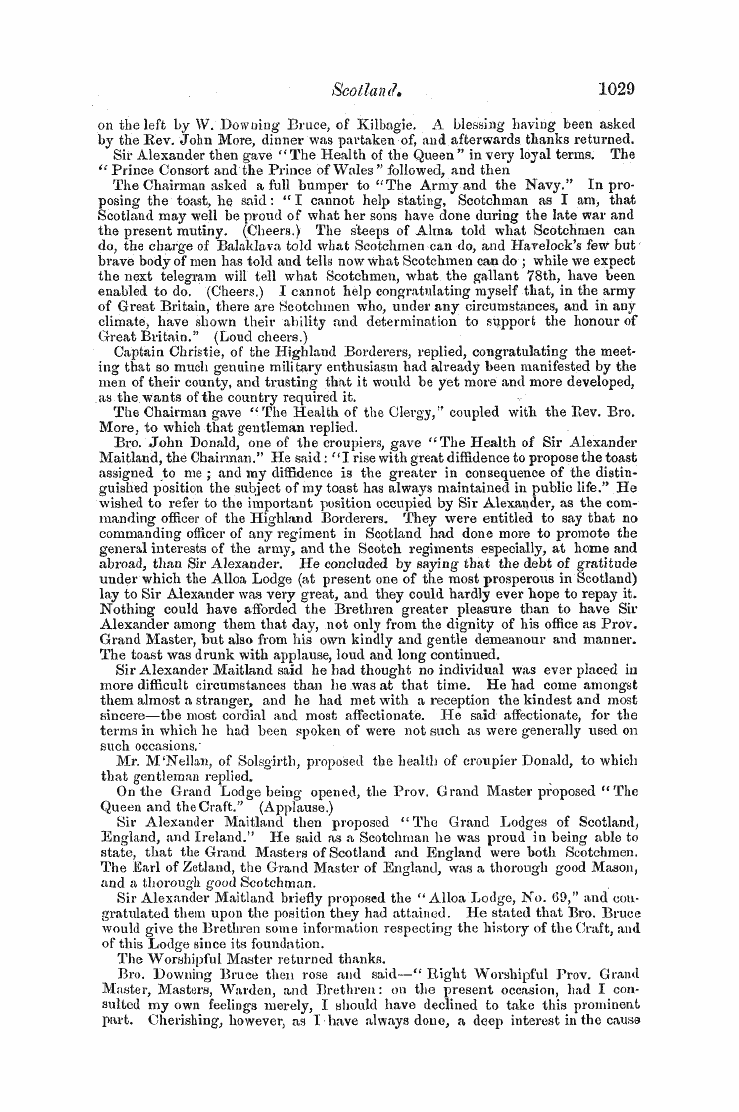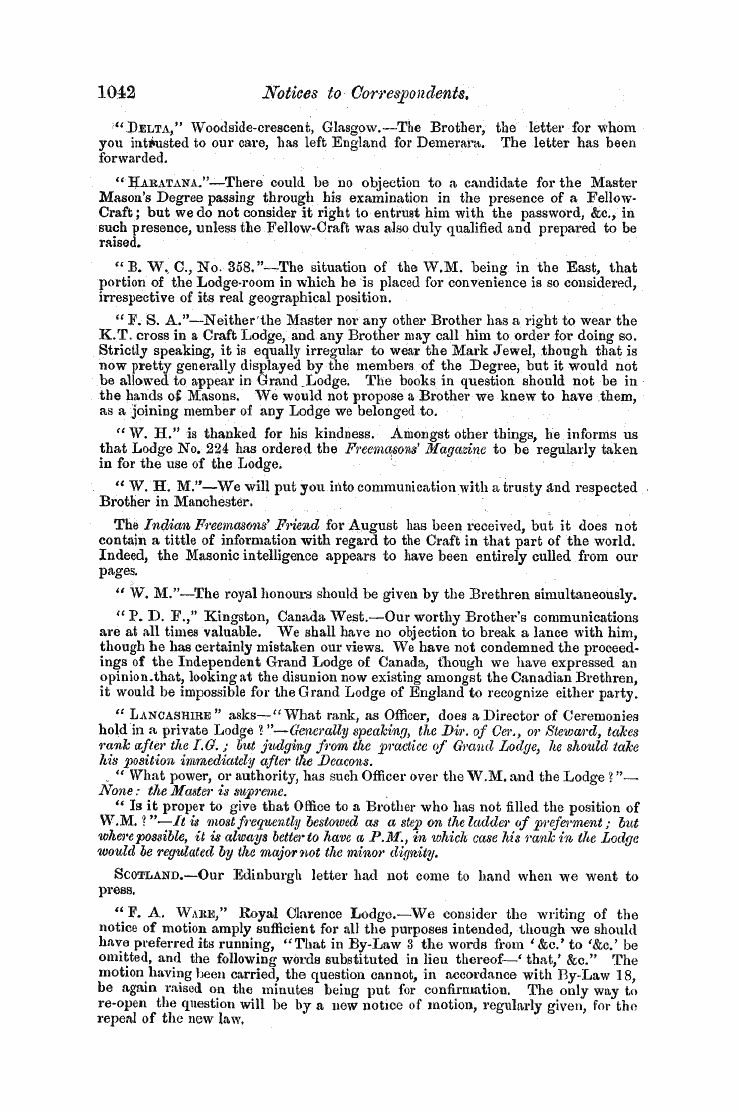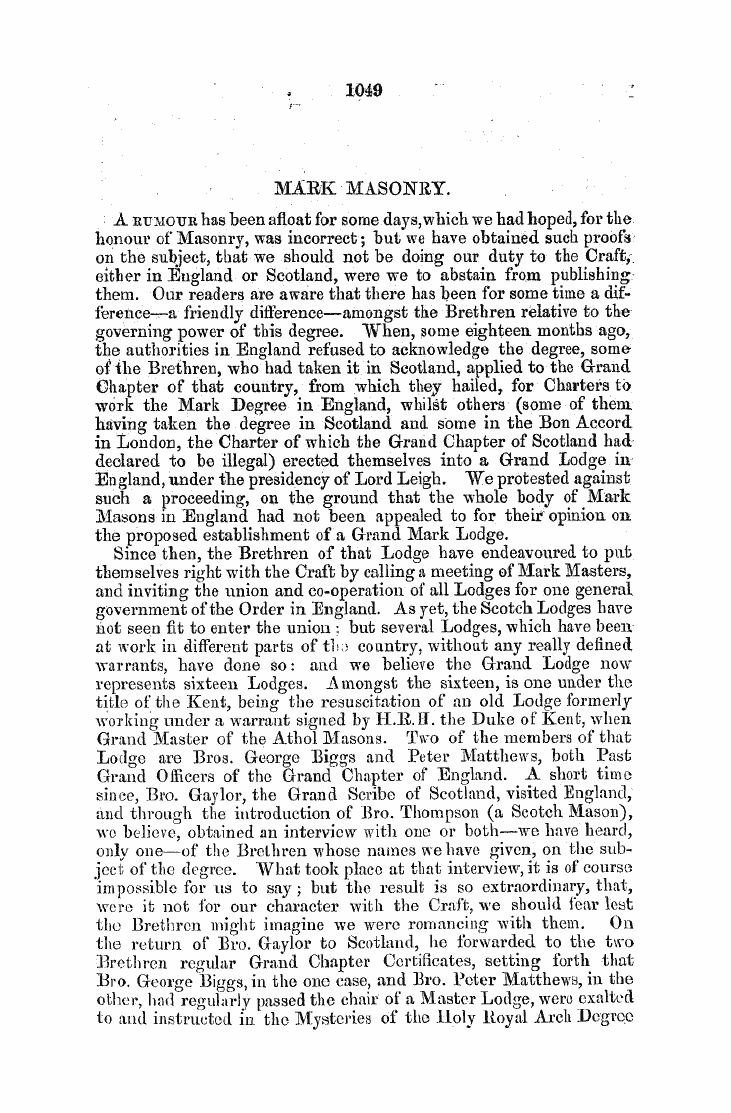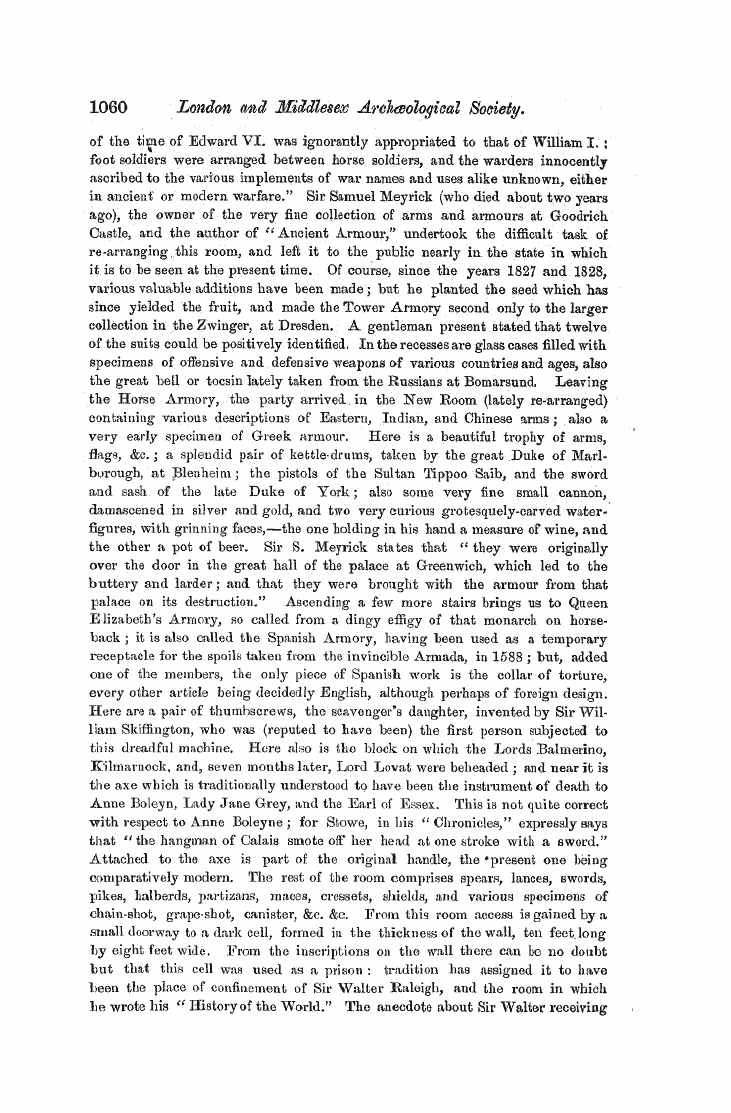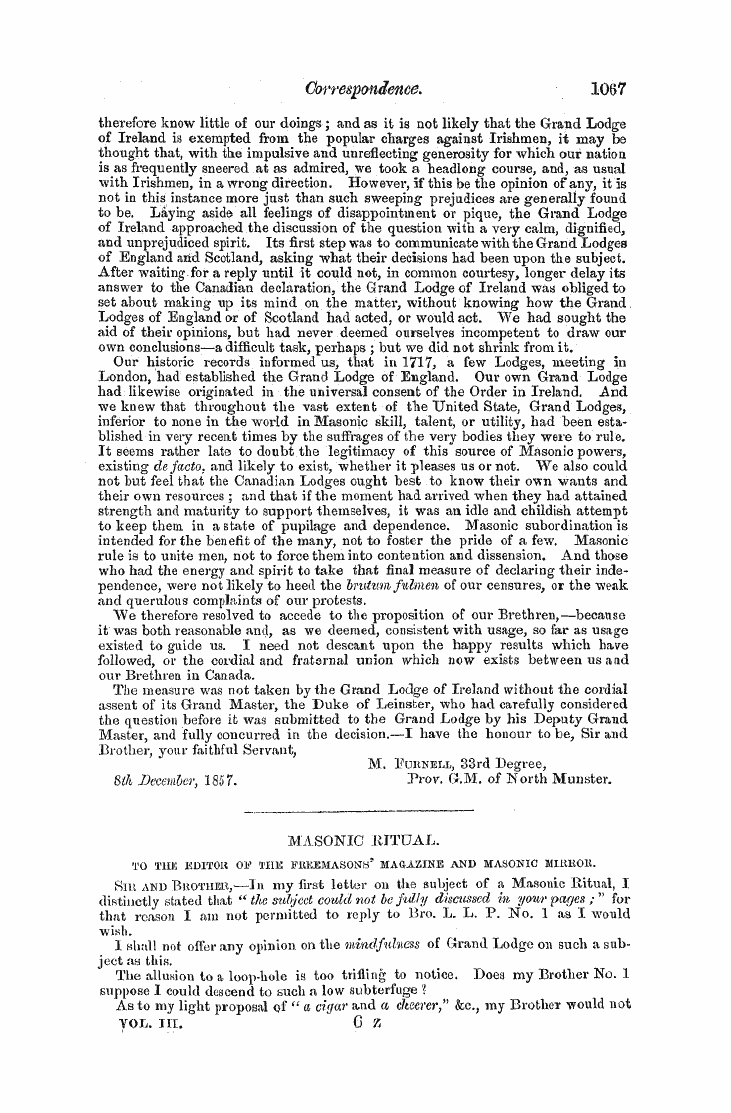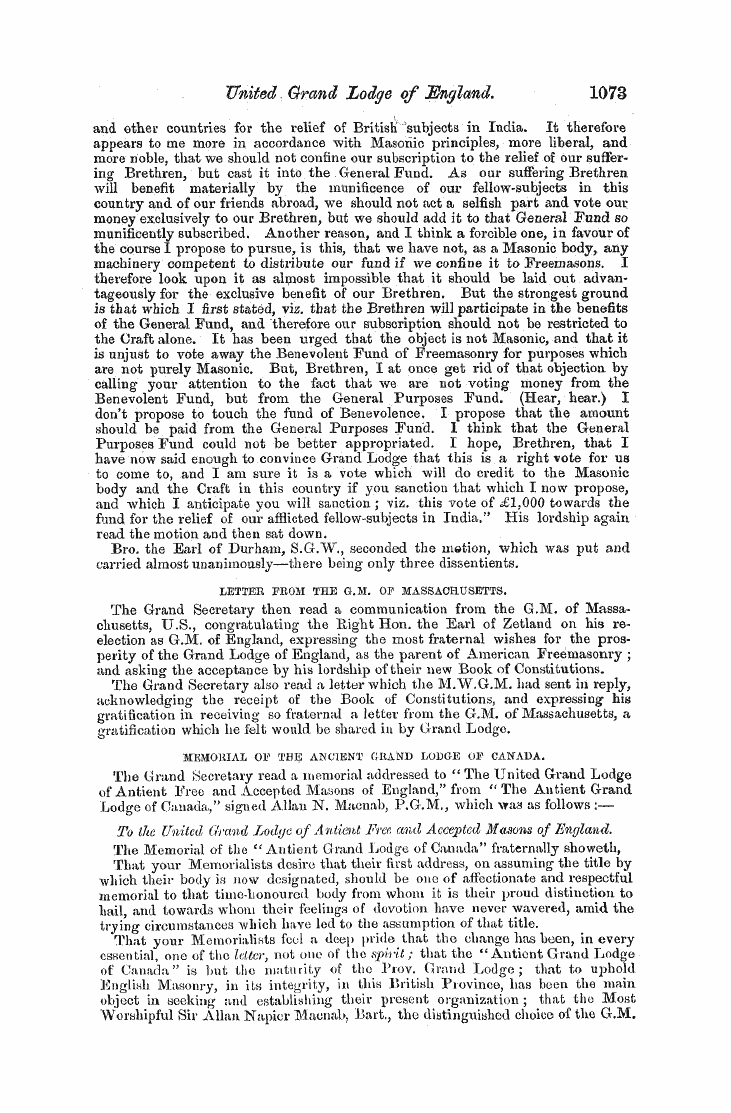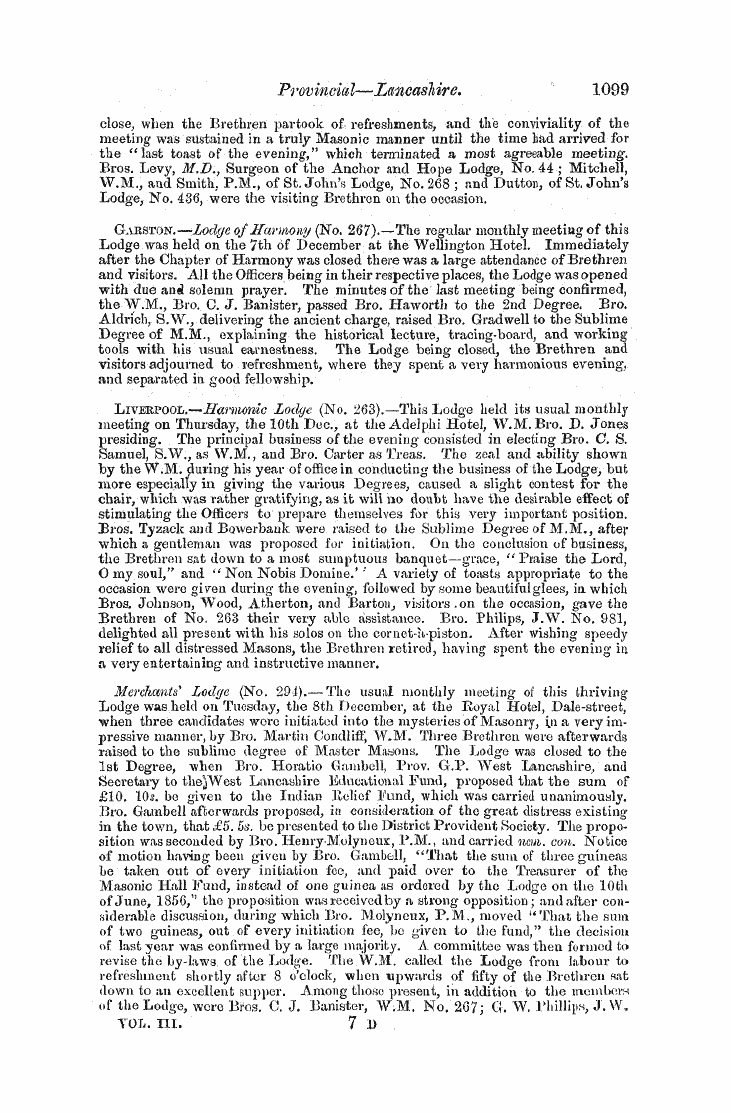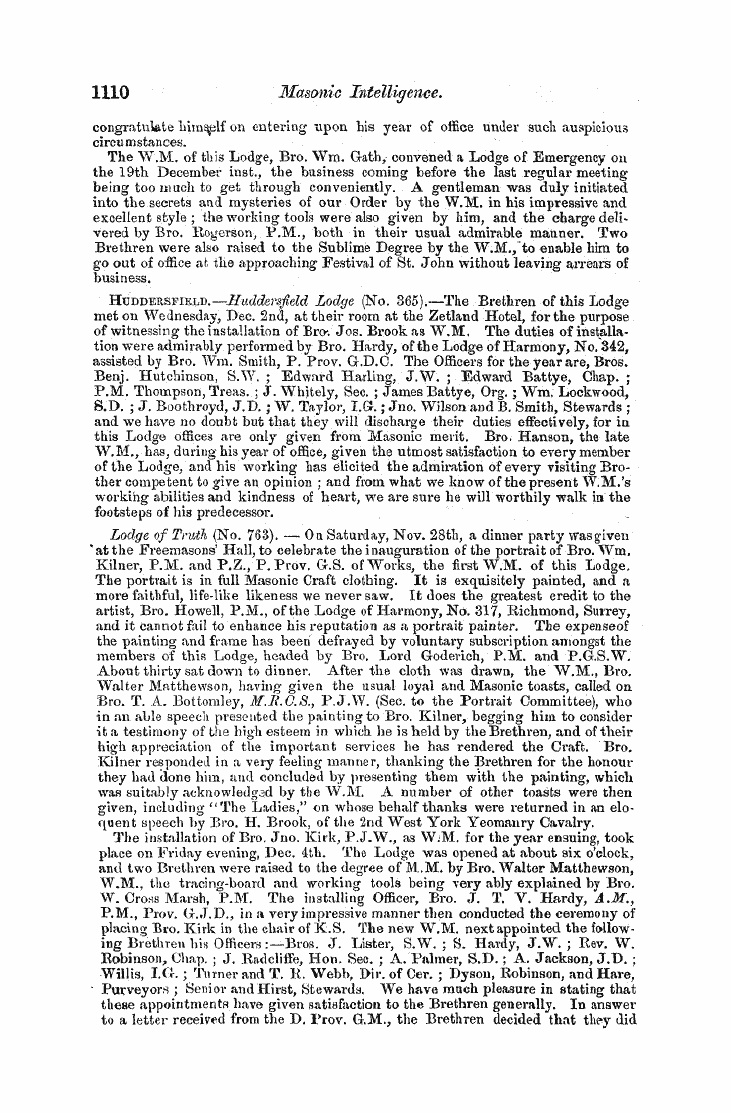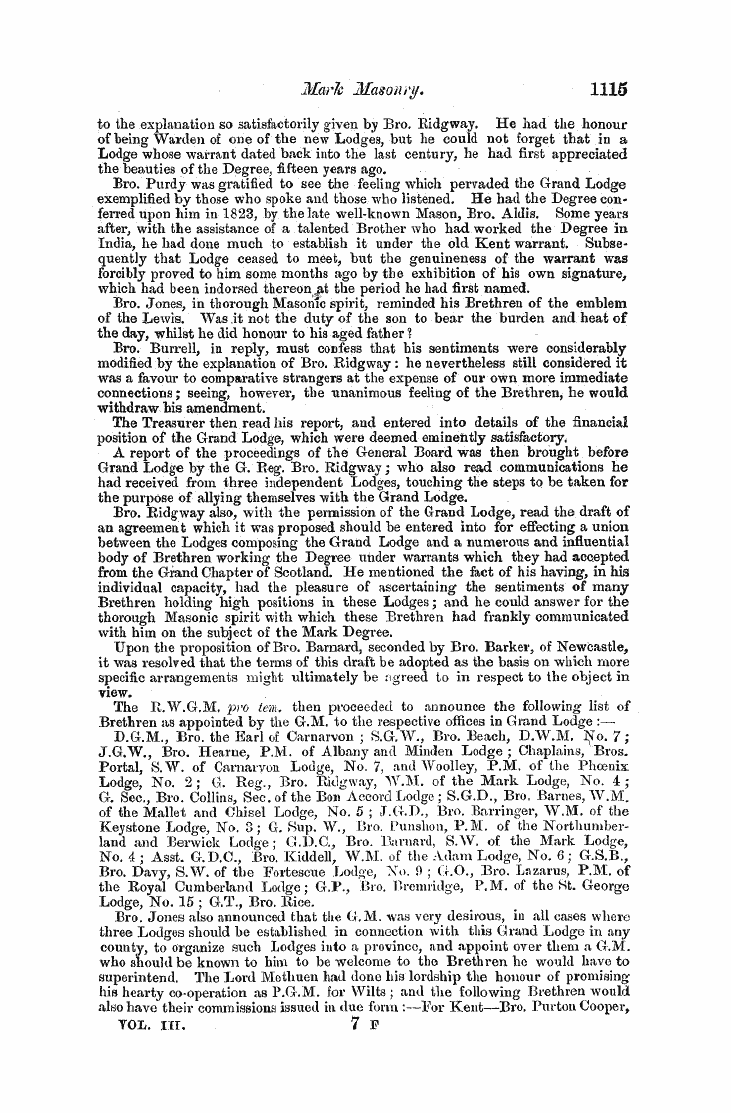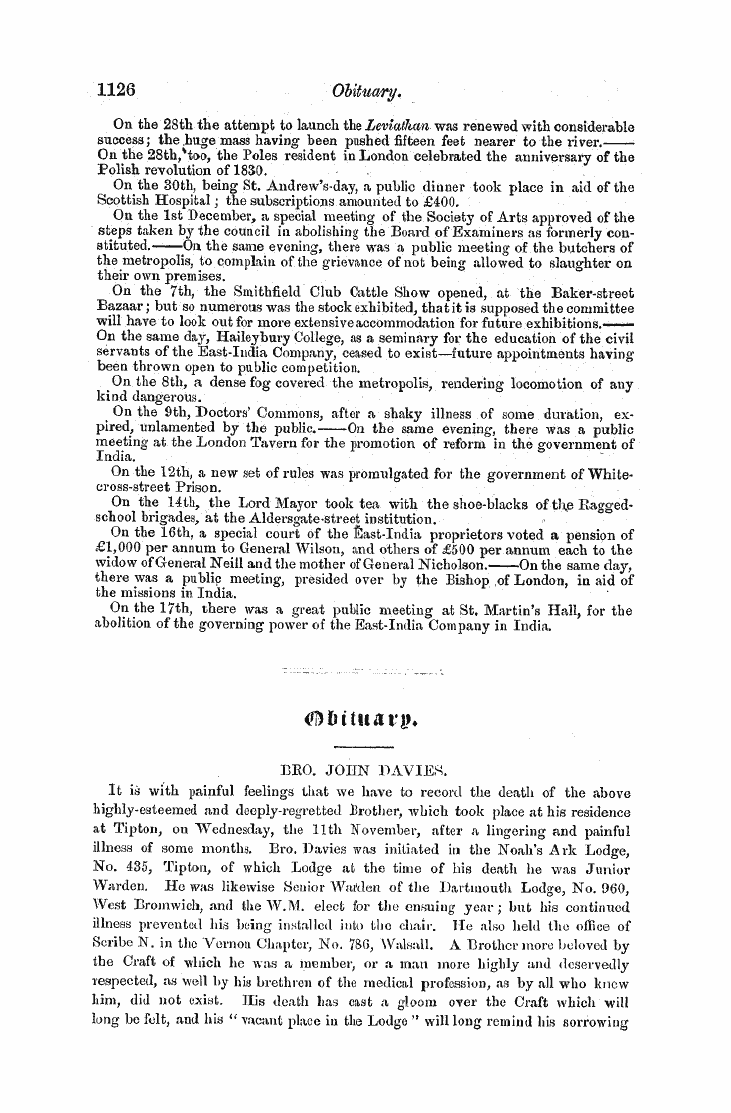-
Articles/Ads
Article EEVIEWS OF UEW BOOKS ← Page 6 of 6
Note: This text has been automatically extracted via Optical Character Recognition (OCR) software.
Eeviews Of Uew Books
ber of instances in which . direct and indirect appeals to the Almighty , by the instrumentality of prayer , were answered from above . She mentions in detail a great number of those cases , and points out the circumstances under which the Supreme Being was induced by force of prayer to manifest Himself to His creatures . The book is well adapted for family exercise , as the prayers and meditations are suitable to all condition of the human mind . The design of the work is worthy of all commendations , and the author has accomplished her object without importing into her work a single taint of sectarianism .
" Popidar Errors Explained and Illustrated ; a Boole for Old and Young" by John Times , F . S . A ., author of " Curiosities of London , " & c . ; an entirely new edition . London : Kent and Co . —If by an ¦ '" entirely new edition " Mr . Timbs means to convey the impression that the old edition has been expunged from the series of volumes of " Things not generally Known , " the reader may be inclined to quarrel with him for withdrawing a very useful little book ; but
if the new edition he construed in the ordinary acceptation of the word , the public will be glad to hail the appearance of a f tiller and more carefully prepared explanation of popular errors . As a scholar and an antiquary , Mr . Timbs delights in exposing those vulgar errors which , if left uncorrected , creep at length into the history and literature of a country , but which , when explained and examined by the light of reason and common sense , are generally found to be based upon ignorance or credulity . His " '" Popular Errors " is not only a useful but a pleasant book .
" The Physician for All : Ms Philosophy , his Experience , and Iris Mission , " hy John Spurgi ^ , M . D . ( Second Curriculum ) . London : J . S . Hodson . ~ Dr . Spurgin belongs to the class of medical men who think that the broad principles of the healing art should be as universally known as they are generally valued . He is not one of those who hold the antiquated opinion , that the more the public are kepti m . the dark the higher will be the importance attached to the profession of medicine . On the contrary , he is in favour of throwing open the arcana of medical science , and leaving the public to place their confidence in those men
whom superior education and mental capacity are sure to raise to prominent positions in their profession , In the "Physician for All , " he exposes the extent of the imposition practised upon the public by * ' quacks , " and points out on the highest , moral , and scientific grounds the true principles upon which disease should be treated . Dr . Spurgin especially refers to the discovery of Dr . Fell , the American physician , for the cure of cancer , and adds his testimony to the
success of the treatment adopted by that gentleman . He expresses his regret that the American physician is not largediearted enough to impart his secret to the profession , and thus be the means of mitigating a vast amount of human misery . ^ Dr . Tell , however , keeps his secret to himself , agreeing , no doubt , with the admirable aphorism of the late Duke of Newcastle , that every man has a right to do what he likes with his own .
"Two Lectures delivered at the meeting oj the York and Lincoln Architectural Societies at Lancaster" by George Gilbert Scott , Esq ., A . RJA ., and Edward Beckett Denison , Esq ., Q . O . Doncaster : Brooke , White , and Hatfield . London : Bell and Daddy . - —These lectures are well deserving of attention from all who take an interest in architecture , and the relieving England from , the reproach that she has no national architecture , and what she copies from others she only
spoils . On the subject of church architecture , both gentlemen are unusually eloquent , and it is clear that they are alike duly impressed with the necessity of rendering our ecclesiastical buildings at once more simple , more ennobling , and more artistic than the great majority of modern churches can claim any credit for being ; and , as such , recommend as a general rule the adoption of the Gothic style for such edifices .
Note: This text has been automatically extracted via Optical Character Recognition (OCR) software.
Eeviews Of Uew Books
ber of instances in which . direct and indirect appeals to the Almighty , by the instrumentality of prayer , were answered from above . She mentions in detail a great number of those cases , and points out the circumstances under which the Supreme Being was induced by force of prayer to manifest Himself to His creatures . The book is well adapted for family exercise , as the prayers and meditations are suitable to all condition of the human mind . The design of the work is worthy of all commendations , and the author has accomplished her object without importing into her work a single taint of sectarianism .
" Popidar Errors Explained and Illustrated ; a Boole for Old and Young" by John Times , F . S . A ., author of " Curiosities of London , " & c . ; an entirely new edition . London : Kent and Co . —If by an ¦ '" entirely new edition " Mr . Timbs means to convey the impression that the old edition has been expunged from the series of volumes of " Things not generally Known , " the reader may be inclined to quarrel with him for withdrawing a very useful little book ; but
if the new edition he construed in the ordinary acceptation of the word , the public will be glad to hail the appearance of a f tiller and more carefully prepared explanation of popular errors . As a scholar and an antiquary , Mr . Timbs delights in exposing those vulgar errors which , if left uncorrected , creep at length into the history and literature of a country , but which , when explained and examined by the light of reason and common sense , are generally found to be based upon ignorance or credulity . His " '" Popular Errors " is not only a useful but a pleasant book .
" The Physician for All : Ms Philosophy , his Experience , and Iris Mission , " hy John Spurgi ^ , M . D . ( Second Curriculum ) . London : J . S . Hodson . ~ Dr . Spurgin belongs to the class of medical men who think that the broad principles of the healing art should be as universally known as they are generally valued . He is not one of those who hold the antiquated opinion , that the more the public are kepti m . the dark the higher will be the importance attached to the profession of medicine . On the contrary , he is in favour of throwing open the arcana of medical science , and leaving the public to place their confidence in those men
whom superior education and mental capacity are sure to raise to prominent positions in their profession , In the "Physician for All , " he exposes the extent of the imposition practised upon the public by * ' quacks , " and points out on the highest , moral , and scientific grounds the true principles upon which disease should be treated . Dr . Spurgin especially refers to the discovery of Dr . Fell , the American physician , for the cure of cancer , and adds his testimony to the
success of the treatment adopted by that gentleman . He expresses his regret that the American physician is not largediearted enough to impart his secret to the profession , and thus be the means of mitigating a vast amount of human misery . ^ Dr . Tell , however , keeps his secret to himself , agreeing , no doubt , with the admirable aphorism of the late Duke of Newcastle , that every man has a right to do what he likes with his own .
"Two Lectures delivered at the meeting oj the York and Lincoln Architectural Societies at Lancaster" by George Gilbert Scott , Esq ., A . RJA ., and Edward Beckett Denison , Esq ., Q . O . Doncaster : Brooke , White , and Hatfield . London : Bell and Daddy . - —These lectures are well deserving of attention from all who take an interest in architecture , and the relieving England from , the reproach that she has no national architecture , and what she copies from others she only
spoils . On the subject of church architecture , both gentlemen are unusually eloquent , and it is clear that they are alike duly impressed with the necessity of rendering our ecclesiastical buildings at once more simple , more ennobling , and more artistic than the great majority of modern churches can claim any credit for being ; and , as such , recommend as a general rule the adoption of the Gothic style for such edifices .


























